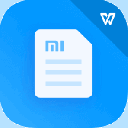










Computer Architecture & Org

Beschreibung von Computer Architecture & Org
The app is a complete free handbook of Computer system Architecture & Organization which covers important topics, notes, materials, news & blogs on the course. Download the App as a reference material & digital book for computer science engineering programs & software degree courses.
This useful App lists 125 topics with detailed notes, diagrams, equations, formulas & course material, the topics are listed in 5 chapters. The app is must have for all the engineering science students & professionals.
The app provides quick revision and reference to the important topics like a detailed flash card notes, it makes it easy & useful for the student or a professional to cover the course syllabus quickly before an exams or interview for jobs.
Track your learning, set reminders, edit the study material, add favorite topics, share the topics on social media.
You can also blog about engineering technology, innovation, engineering startups, college research work, institute updates, Informative links on course materials & education programs from your smartphone or tablet or at http://www.engineeringapps.net/.
Use this useful engineering app as your tutorial, digital book, a reference guide for syllabus, course material, project work, sharing your views on the blog.
Some of the topics Covered in the app are:
1. Introduction to Computer Organization and Architecture
2. Computer Organization and Architecture Structure
3. Performance Measures
4. Memory Locations and Operations
5. Addressing Modes
6. Instruction types of machine
7. A Simple Machine
8. Instructions mnemonics and syntax
9. Assembler Directives and Commands
10. Assembly and Execution of Programs
11. Number System
12. Integer Arithmetic
13. Floating Point Arithmetic
14. The IEEE Floating-Point Standard
15. Hamming Code
16. The Arithmetic and logic Unit
17. Integer Representation
18. Micro Operations
19. Control of the processor
20. Hardware Implimentations
21. Microprogrammed Control
22. Microinstruction Sequencing
23. Microinstruction Execution
24. TI 8800
25. Types of parallel Processor systems
26. Symmetric Multiprocessors
27. Symmetric Multiprocessors Organization
28. Multiprocessor Operating System Design Considerations
29. A Mainframe SMP
30. Cache Coherence and the mesi protocol
31. Software and hardware Solutions for cache Coherence
32. The MESI Protocol
33. Multithreading and Clip Multiprocessing
34. Approaches to Explicit Multithreading
35. Clusters
36. Operating System Design Issues in Clustering
37. Cluster Computer Architecture
38. Nonuniform memory Access
39. NUMA Pros and Cons
40. Vector Computation
41. Approaches to Vector Computation
42. Hardware Performance Issues
43. Power Consumption
44. Software Performance Issues
45. Application Example:Valve Game Software
46. Multicore Organization
47. Introduction to Input/Output Devices
48. Basic Concepts of I/O Devices
49. Progarmmed I/O
50. Interrupt – Driven I/O
51. Interrupt Hardware
52. Examples of interrupt I/O
53. Direct Memory Access(DMA)
54. Buses
55. Synchronous and Asynchronous Buses
56. Bus Arbitration
57. Input/Output Interfaces
58. Accessing I/O Devices
59. Program-controlled I/O
60. Interrupts
61. Interrupts Hardware
62. Interrupt Hardware
63. Enabling and Disabling Interrupts
64. Handling Multiple Devices
Each topic is complete with diagrams, equations and other forms of graphical representations for better learning and quick understanding.
Computer system Architecture & Organization is part of computer science, software engineering education courses and information technology degree programs of various universities.
Die App ist ein komplettes kostenlos Handbuch der Computersystemarchitektur & Organisation, die wichtige Themen, Notizen, Materialien, News & Blogs im Kurs behandelt. Laden Sie die App als Referenzmaterial und digitale Buch für Informatik-Engineering-Programme und Software-Studiengänge.
Diese nützliche App listet 125 Themen mit ausführlichen Erläuterungen, Grafiken, Gleichungen, Formeln & Lehrmaterial werden die Themen in 5 Kapiteln aufgeführt. Die App ist muss für alle Ingenieurwissenschaften Studenten & Profis haben.
Die App bietet eine schnelle Überarbeitung und Bezug auf die wichtige Themen wie eine detaillierte Flash-Karte Notizen, es macht es einfach und nützlich für den Schüler oder einer professionellen den Lehrplan zu decken schnell vor einem Examen oder Interview für Arbeitsplätze.
Verfolgen Sie Ihre Lernen, Erinnerungen festlegen, bearbeiten Sie das Studienmaterial, fügen Lieblingsthemen, teilen sich die Themen auf Social Media.
Sie können auch über Engineering-Technologie, Innovation, Engineering Start-ups, College Forschungsarbeit, Institut Aktuelles, Informatives Links auf Kursmaterialien und Bildungsprogramme von Ihrem Smartphone oder Tablet oder bei http://www.engineeringapps.net/ Blog.
Verwenden Sie diese nützliche technische Anwendung als Tutorial, digitales Buch, ein Nachschlagewerk für Lehrplan, Unterrichtsmaterial, Projektarbeit, teilen Sie Ihre Ansichten auf dem Blog.
Einige der Themen in der App abgedeckt sind:
1. Einführung in die Rechnerorganisation und Architektur
2. Computer Organisation und Architektur Struktur
3. Performance-Kennzahlen
4. Speicherplätze und Operationen
5. Adressierungsarten
6. Betriebsarten Maschine
7. Simple Machine
8. Anweisungen Mnemotechnik und Syntax
9. Assembler-Richtlinien und Befehle
10. Montage und Ausführung von Programmen
11. Zahlensystem
12. Integer Arithmetik
13. Gleitkomma-Arithmetik
14. Die IEEE Gleitkommaoperation Norm
15. Hamming-Code
16. Die arithmetische und logische Einheit
17. Integer-Darstellung
18. Mikrooperationen
19. Steuerung des Prozessors
20. Hardware Implimentations
21. MIKROSteuer
22. Mikrobefehls Sequenzierung
23. Mikrobefehlsausführung
24. TI 8800
25. Arten von Parallelprozessorsysteme
26. Symmetric Multiprozessoren
27. Symmetric Multiprozessoren Organisation
28. Multi-Prozessor-Betriebssystem-Design-Überlegungen
29. Ein Mainframe SMP
30. Cache-Kohärenz und das MESI-Protokoll
31. Software- und Hardwarelösungen für die Cache-Kohärenz
32. Das MESI-Protokoll
33. Multithreading und Clip Multiproccessing
34. Ansätze zur Explicit Multithreading
35. Cluster
36. Operating System Design Probleme in Clustering
37. Cluster Rechnerarchitektur
38. Ungleichmäßiges Speicherzugriff
39. NUMA Vor- und Nachteile
40. Vektor-Berechnung
41. Ansätze zur Vektorrechnung
42. Hardware Leistungsprobleme
43. Leistungsaufnahme
44. Software von Leistungsproblemen
45. Anwendungsbeispiel: Ventilspielsoftware
46. Multicore- Organisation
47. Einführung in die Ein- / Ausgabegeräte
48. Grundlagen der E / A-Geräte
49. Progarmmed I / O
50. Interrupt - Driven I / O
51. Interrupt Hardware
52. Beispiele für Interrupts I / O
53. Direct Memory Access (DMA)
54. Die Busse
55. Synchrone und asynchrone Busse
56. Bus Arbitration
57. Input / Output-Schnittstellen
58. Auf E / A-Geräte
59. Programmgesteuerte I / O
60. Unterbricht
61. Unterbricht Hardware
62. Interrupt Hardware
63. Aktivieren und Deaktivieren von Interrupts
64. Bedienung mehrerer Geräte
Jedes Thema ist komplett mit Grafiken, Gleichungen und andere Formen der grafischen Darstellungen für ein besseres Lernen und schnelles Verständnis.
Das Computersystem Architektur & Organisation ist Teil der Informatik, Softwaretechnik Bildungskurse und Informationstechnologie-Studiengänge von verschiedenen Universitäten.



























